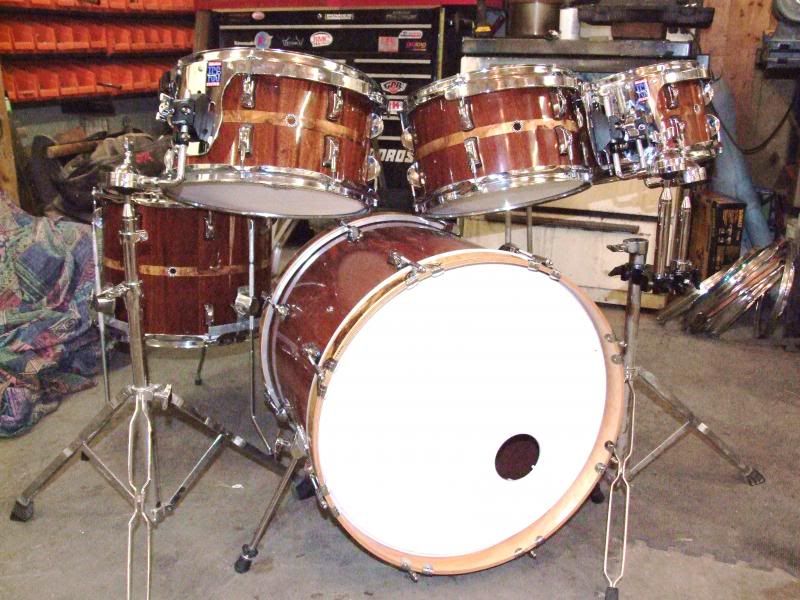I keep noticing in some reviews and posts dealing with high-end kits that the wood used is "aged". Is this referring to the maturity of the tree before it is converted to its intended purpose of making drum shells, or does it refer to an aging that occurs for the harvested wood that is aged before being used for construction?
After harvesting. After a certain point, the older the tree is, the less good, usable wood is in it due to rot, insects, wind shake, cracking etc.
Would, therefore, buying say a used mid-range maple kit that is a few years older might have the benefits of that aging process in its shells?
No. Depending on the timber and its desired purpose, "aging" might last a year or less for a drumstick or 5-10 years or more for something like a bow. Aging is done to wood that's been cut more or less close to the size of the finished product. Aging lets the wood dry out and warp. It's better to have a nice dry banana to cut something straight out of than to see something finished and pretty turn into a propeller or a potato chip. Also a lot of wood is "kiln-dried" or kept in very dry, warm rooms to speed up drying, which for many applications is better than waiting for years.
For drums, dry wood is very preferable for resonance. Plywood drums are made in such a way that additional warping after manufacture is minimized. Also the glue between plies is much less porous than wood and probably slows down further drying/aging. The thinner the shells and the thicker the individual plies, the more likely the drum's shape will be affected over time. Also, the better aged the wood was, the less likely it is that the drum's sound will significantly change after 10-20-30 years or so.
What larryace and uniongoon said about "lingnins" makes a whole lot of sense. I would wildly guess that most shaved plies of wood for drums are only kiln-dried before lamination. Using really old cut wood to make a drum makes sense for stave and segmented shell construction.
tldr: Wood is complicated. Buy a drum if you like how it sounds and if you can afford it.



